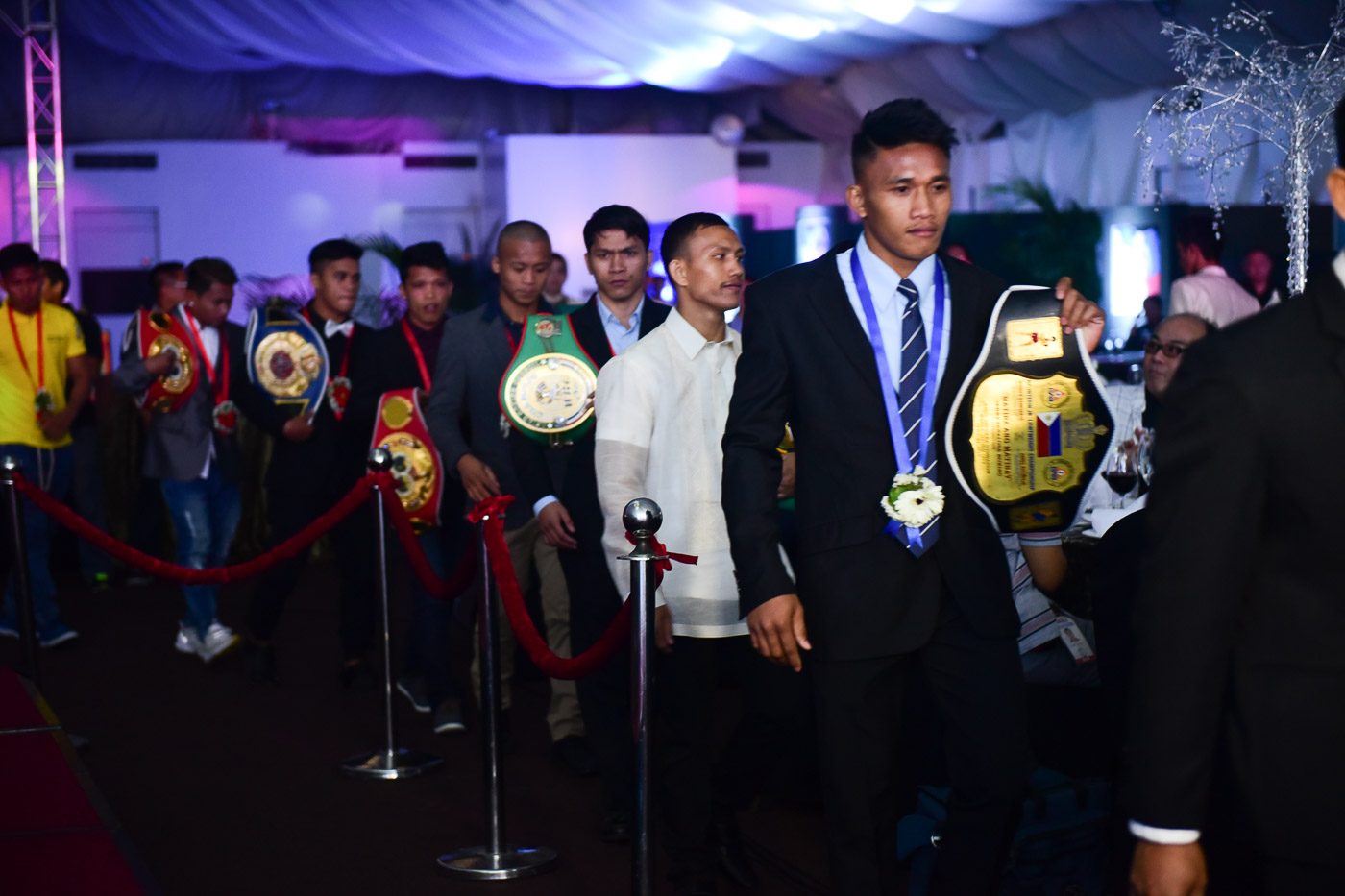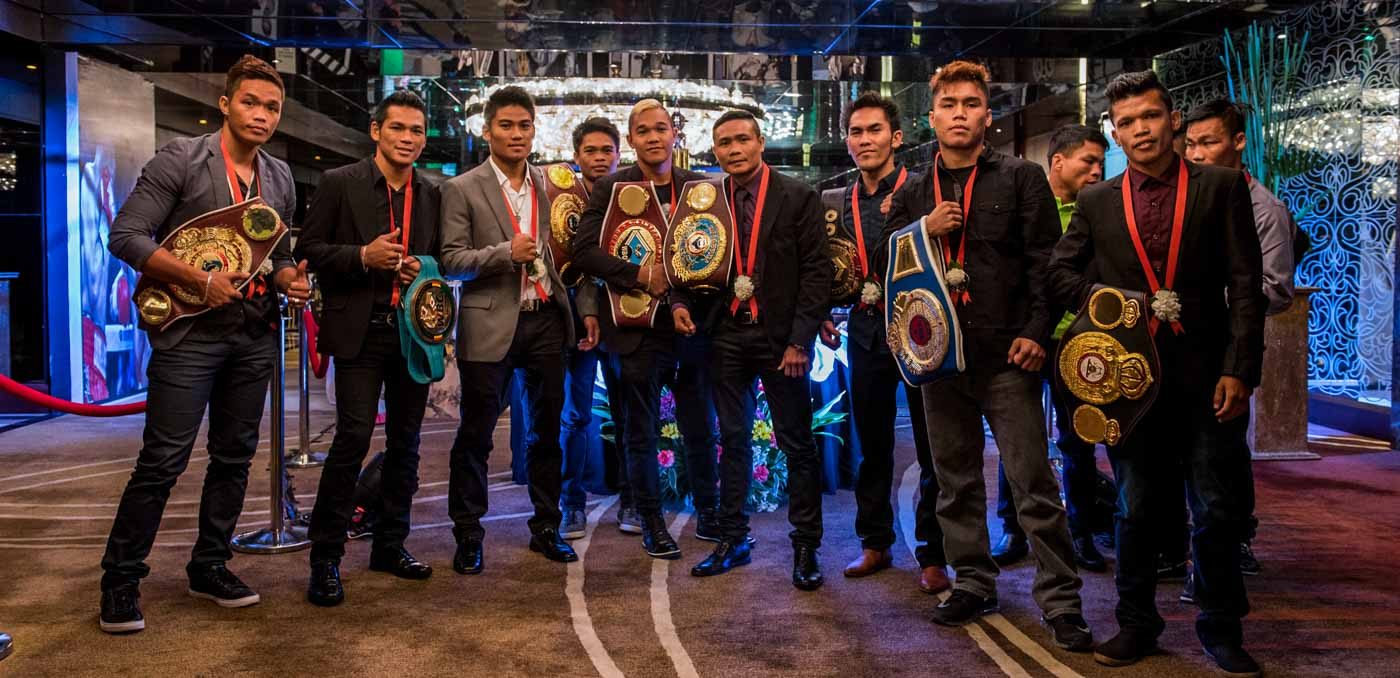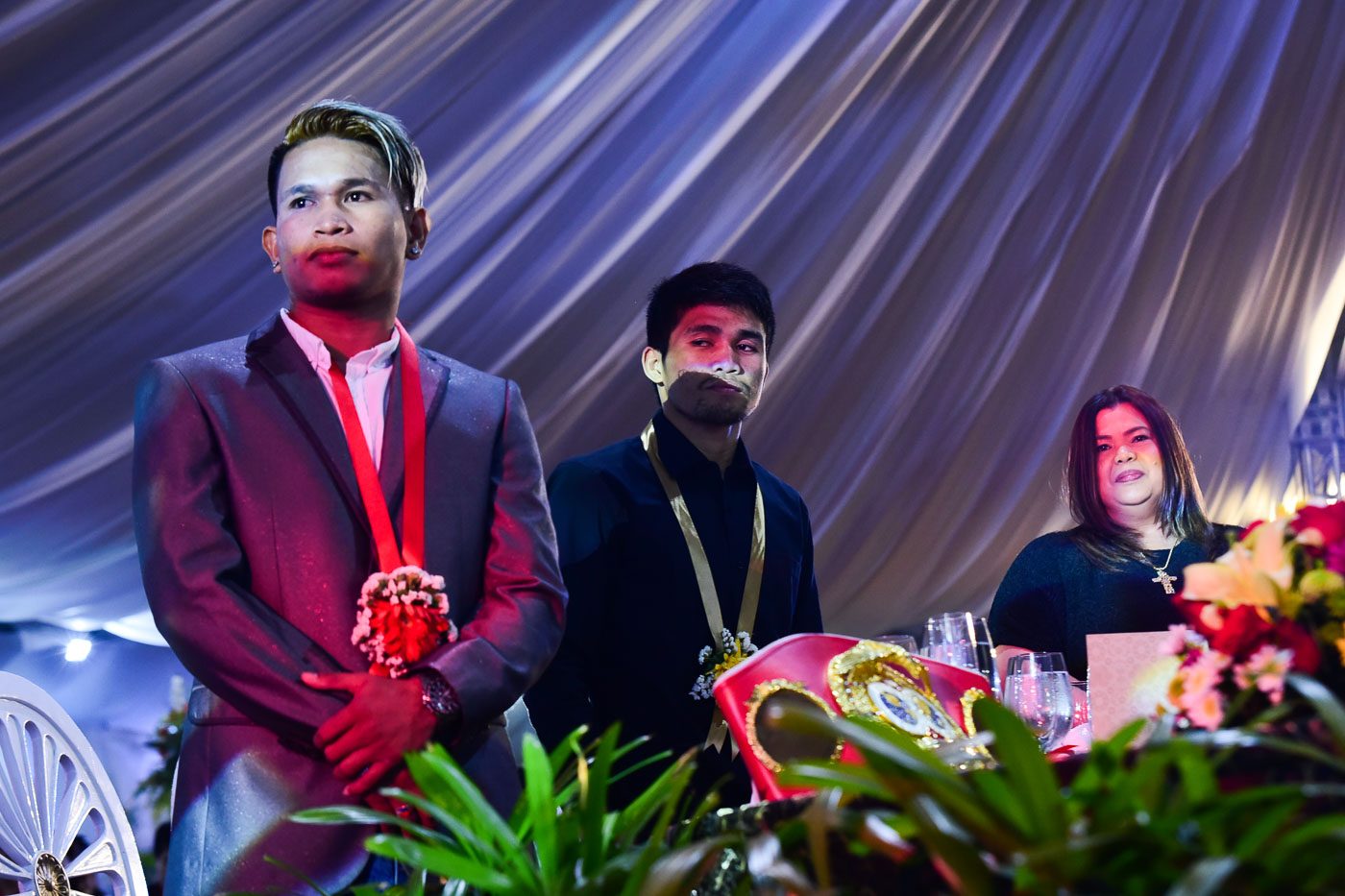SUMMARY
This is AI generated summarization, which may have errors. For context, always refer to the full article.

In recent years, the culture of Philippine boxing has been one that touts wins by Filipinos over any foreign boxer, and frowns upon the suggestion of fights of significance between two Filipinos.
That has to change, and without a moment to spare.
If ever there was a boxing culture that needed to be refreshed, it’s the Philippines’. Boxing is on life support in the Philippines, with the arena shows of the 1970s and 1980s a memory as promoters are unable to sell tickets in Metro Manila, and television networks abandon the sport, leaving many of the best Filipino fighters like Jerwin Ancajas, Marlon Tapales and Johnriel Casimero without coverage in their home country.
The result has been a downturn in business, leading to a drop in the number of registered professional boxers (down from about 1500 in 2011 to 652 last year but up to 1,051 this year per GAB chairman Baham Mitra), and cards being tucked away in cheap venues like Makati Cinema Square.
Michael Aldeguer, who heads ALA Promotions, the most successful boxing company in the Philippines for the past decade, signaled a shift in philosophy last month as he addressed media ahead of its 40th installment of Pinoy Pride, a semi-regular series which has aired since 2008 on ABS-CBN, the only network in the Philippines which has shown a consistent commitment to showcasing local boxing in recent years.
“We’re open to doing bigger fights, Filipino vs Filipino, the best prospects and the best prospects, I think that would help Philippine boxing, put us in a position where we can really escalate to a different level where people want the better fights,” Aldeguer said.
It’s a notable break from the typical formula of Pinoy Pride, which has at times seemed more like a television program than a vehicle for building champions. The show has primarily centered around fighters from the ALA Gym in Cebu being matched against lesser opponents from Mexico, Indonesia, Thailand and the African continent.
Having the best fighters in the country face one another, and then the winners of those bouts meet international competition, would help identify who the real prospects are and reduce the number of Filipino boxers being exposed in mismatches abroad. It could also foster domestic rivalries between cities and stables, increasing competitiveness and giving fans in different regions a new reason to cheer.
Aldeguer said the original goal was to have the best fighters in the country fight one another before moving on to bigger challenges internationally. He added he had wanted to make fights like ALA’s Milan Melindo vs Brian Viloria when Melindo was number one contender for Viloria’s WBO flyweight title, and a match between hard-hitting compatriots Rey “Boom Boom” Bautista against Bernabe Concepcion, but was met with opposition.
“It was the other side because the sponsors and network never liked it,” said Aldeguer. “Because of our culture, the patriotism and everything, it’s just not there.”
The support for pitting the best Filipino fighters to see who comes out on top is shared by Jim Claude Manangquil, who heads the General Santos City-based Sanman Promotions. Manangquil, who counts world-rated fighter Randy Petalcorin, and prospects Romero Duno and Reymart Gaballo among his stable, has been a proponent of making Filipino vs Filipino fights, and believes that the lack of domestic rivalries has caused the sport’s popularity to wane in the Philippines.
“Then at least Filipino fans would know who’s the real deal and fans won’t be blinded to follow boxers who aren’t tested,” said Manangquil.
Pitting the best Filipinos against each other isn’t a revolutionary idea. Before Manny Pacquiao began his star-making run in the United States, he was swapping punches with tough guys like Melvin Magramo, Arnel Barotillo and Reynante Jamili. Rene Barrientos, a WBC junior lightweight champion in the 1960s, cut his teeth against Flash Elorde and Carl Penalosa (the father of Gerry and Dodie Boy Penalosa).
Dodie Boy Penalosa, a two-division champion who fought former Filipino world champions Manny Melchor, Rolando Bohol, Tacy Macalos and Rolando Pascua in the 1980s and 90s, has a simple theory about why some stables have been hesitant to make those kinds of fights: “For me I think it’s because of the managers and promoters. They don’t want their boxers to lose.” Referee Bruce McTavish, who has 30 years of experience officiating fights in the Philippines, says Filipinos only stopped fighting each other in the past 15 years.
“Money,” he said when asked why.

Many fans, who had grown accustomed to the intoxicating pride that came along with Pacquiao knocking out Mexican legends, have also been resistant to seeing their favorites fight one another. A card that shows Filipinos fighting one another can appear aesthetically as cheaper or low-rent, even as the best fighters in the Southeast Asian region come from the Philippines. Promoters end up paying $1,200-1,800 plus travel expenses for Indonesians and Thais to fight in the Philippines when a local fighter would prove more competitive.
In other countries, like England and Mexico, the club circuit is already a domestic proving ground for prospects, and fights between compatriots like Canelo Alvarez-Julio Cesar Chavez Jr and Carl Froch-George Groves make for major pay-per-view sales and arena gates. Nietes doesn’t think the Philippines is ready for that.
“Maybe. But if you compare it to Mexico, they have numerous champions, so it would be okay for them to have a Mexican versus Mexican fight,” said Nietes. “But here in the Philippines, we only have a few. So for me, it doesn’t look too good. But if we’re left with no choice, if that’s what the promoter or manager wants, then we can’t do anything about it.”
Increasingly, Filipino fighters want to see it happen as well. At this past Elorde Awards, Casimero, a former junior flyweight and flyweight champion, told this reporter he wanted to challenge Ancajas, who was seated on the other side of the table, for his IBF junior bantamweight championship, as Gerry Penalosa called it a good fight “for the Filipino people.” Should that fight happen in the Philippines, it’d be the first time a Filipino vs Filipino world championship took place on Philippine soil since Pancho Villa defended his world flyweight championship against Clever Sencio in 1925 at Wallace Field (current site of Luneta Park) in Manila.
Johnriel Casimero calls out IBF junior bantamweight champ Jerwin Ancajas at the Elorde Awards for an all-Filipino championship fight #boxing pic.twitter.com/0GgVJTb382
— Ryan Songalia (@ryansongalia) March 25, 2017
And ALA has tested the waters some, putting Melvin Jerusalem against former champ Florante Condes, and Jeo Santisima against Marco Demecillo on a Pinoy Pride in February of 2016. Omega is putting undefeated Jessie Cris Rosales in a make-or-break fight against hard-puncher Jun Doliguez on July 7 in Bohol. ALA also had their fighter Jonas Sultan in a bout against former flyweight champion Sonny Boy Jaro last Sunday on a card promoted by Anson Tiu Co.
“For me let’s follow what the Mexicans do, I think they have the right formula,” says Tiu Co, the owner of Baguio’s Shape Up Boxing Gym. Tiu Co says that having fighters go abroad early makes for quick cash but shortens careers in the long run, and believes all-Filipino fights “definitely will” reignite the local scene. “Let’s start first with Luzon vs the Visayas, or Visayas vs Mindanao…because most of the good boxers come from these areas.”
One hurdle for making significant all-Filipino fights is finding ways to finance it. ABS-CBN, with its Pinoy Pride apparatus, is in the best position to make meaningful fights. Outside of ABS, there’s GMA, which is the primary network for Manny Pacquiao’s fights and recently began showing boxing events promoted by Cebu’s Omega Boxing, though on significant delay. TV5 had been involved with Casimero’s international fights in the past, and showed Duno’s knockout win over Christian “Chimpa” Gonzalez on delay, but hasn’t shown much local boxing of late.
Without TV, fighting abroad is the most viable option for boxers to make significant money. A non-champion can get between $4,000-10,000 USD to fight in Mexico or Russia, and get just 30,000-60,000 pesos ($600-1,200 USD) to fight in the Philippines, Manangquil says.
“There should be balance [between business and sport]. Boxers fight and risk their lives. It’s fair enough that they make the money they deserve and bring pride to the Philippines,” said Manangquil.
Aldeguer says the next evolution of Pinoy Pride is to open the tent to other stables, which could help fill cards as ALA mainstays Nietes and Melindo get up in age.

Aldeguer says he’s had discussions with veteran manager Rex “Wakee” Salud about showing the fights of Marlon Tapales, the former WBO bantamweight champion whose last 3 fights – all thrillers – had not been shown in the Philippines, and had exchanged emails with Manangquil about featuring Duno (Manangquil says the exchange stalled after he suggested a short-term deal with Duno over a long-term commitment). Aldeguer also expressed interest in showcasing Ancajas.
“There were 3 things that we wanted to do before we launched the brand of Pinoy Pride. Why Pinoy Pride? Because for the Filipino fighters to showcase everyone, not just from the ALA Gym, that was one. To showcase world class events in the Philippines which we never did before. Before just bringing all the Thais and everything. The last one was to sign up fighters from different stables, which we did from Manny Pinol before,” Aldeguer said.
“I would say this. There might be a Pinoy Pride with no ALA Gym fighters, that is the thrust we talked about. Hopefully we can have one.”
One fight ALA responded positively about making at the press conference before Pinoy Pride 40 was matching Santisima with undefeated Cebuano Jack Tepora of the Omega stable. Omega president Pio Paulo Castillo commented on a Facebook video of Aldeguer’s thoughts on the matchup: “Healthy competition is always good for [an] industry like boxing!”
Aldeguer says the networks and sponsors are warming to the idea of making the best fights among Filipino boxers. He hopes the crowd gets hot to it also.
“Hopefully the acceptance, the culture, everything can change.”
Unsolicited advice
The Games and Amusement Board will host its annual convention from May 11-13 in Davao City. With debate ongoing over whether the GAB should mandate yearly MRI scans over the less expensive CT scans already in place, a cheap way to protect boxers and those at ringside is to expand blood testing. Currently the GAB only requires a test for Hepatitis B, while the standard in Nevada and New York call for yearly test results for Hepatitis B, Hepatitis C and HIV. Hopefully this is a topic that can come up in Davao.
Also unsolicited: Pinoy Pride has the best production in local boxing, but it wouldn’t hurt if boxers selected their own music for ring entrances. Ring entrances are a way to show a boxer’s personality, and the current generic hard rock riffs for each boxer tell us nothing about who they are out of the ring.
Speaking of out of the ring, can fans stop entering the ring for selfies after the fights are over? You don’t see boxers jumping on the counter at Jollibee or taking selfies on people’s desks. – Rappler.com
Ryan Songalia is the sports editor of Rappler, a member of the Boxing Writers Association of America (BWAA) and a contributor to The Ring magazine. He can be reached at ryan.songalia@rappler.com. Follow him on Twitter @RyanSongalia.
Add a comment
How does this make you feel?
There are no comments yet. Add your comment to start the conversation.